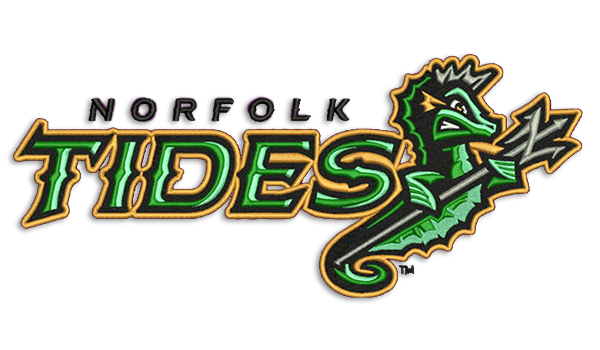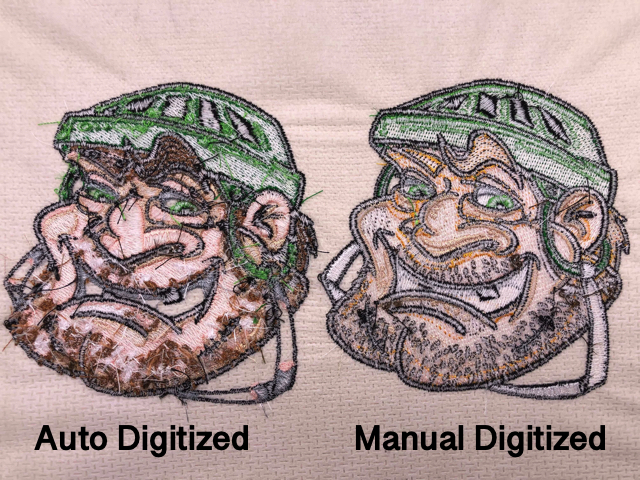Expert Digitizing for Embroidery: High-Quality Designs
Expert Digitizing for Embroidery: High-Quality Designs
Blog Article
Simplifying the Art of Needlework Digitizing: Step-by-Step Overview
Needlework digitizing is a meticulous craft that requires accuracy and imagination. As technology continues to breakthrough, the digitization procedure has come to be extra obtainable, enabling enthusiasts to bring their intricate layouts to life easily. In this guide, we will certainly untangle the intricacies of embroidery digitizing, breaking down each action systematically to streamline the procedure and equip both beginners and skilled embroiderers alike. Remain tuned to discover just how you can simplify this intricate art type and transform your imaginative visions into magnificently stitched masterpieces.
Comprehending Needlework Digitizing Software Application
Needlework digitizing software offers as a critical tool for transforming detailed designs right into digital styles suitable with needlework devices, promoting exact stitching and personalization. This specific software allows users to import numerous image data layouts, such as JPG or PNG, and convert them right into needlework machine-readable layouts like DST, EXP, or PES - Digitizing for Embroidery. By utilizing features like stitch modifying, padding alternatives, and string shade option, digitizing software enables individuals to manage every element of the style procedure
In addition, advanced needlework digitizing software program supplies devices for developing complex designs, adjusting stitch density, and integrating intricate details. Users can likewise sneak peek the style prior to stitching it out, making sure accuracy and minimizing errors. Furthermore, many software application offer automatic attributes that aid enhance the digitizing process, conserving time and effort.
Understanding the capacities of embroidery digitizing software program is vital for attaining top notch results in embroidery jobs. By understanding this device, needlework lovers and professionals can release their creativity and bring detailed layouts to life with precision and efficiency.

Selecting the Right Design Documents
After familiarizing yourself with the abilities of needlework digitizing software application, the next important action in the process is picking the ideal style apply for your project. Digitizing for Embroidery. When picking a layout apply for embroidery digitizing, it's vital to consider the intricacy of the design, the dimension of the last product, and the kind of textile you will be collaborating with
For detailed styles with fine information, a high-resolution photo or vector documents is suggested to guarantee that the needlework maker can accurately reproduce the layout. Additionally, the size of the last product plays a substantial function in selecting the appropriate style documents. Larger styles may call for higher resolution documents to maintain quality and intensity.
Moreover, the type of material you will certainly be embroidering on influences the selection of layout file. Different textiles may need changes in the design data to make certain that the stitches are correctly lined up and the layout appears as intended. By very carefully picking the best design data based on these factors, you can establish yourself up for an effective embroidery digitizing procedure.
Digitizing Tools and Methods
Utilizing specialized software program and precision strategies, digitizing devices are important in changing complex styles right into embroidery-ready files. Needlework digitizing software, such as Wilcom, Hatch, or Embrilliance, provides the necessary platform to transform art work into stitch data. These programs offer attributes like stitch modifying, rug choices, and lettering tools to ensure the layout equates flawlessly onto fabric.
Among the crucial methods in digitizing is producing a clear course for the embroidery machine to follow. This entails digitizing each component of the layout with accuracy, figuring out stitch types, densities, and instructions. By utilizing tools like digitizing tablets or software-specific plugins, embroiderers can achieve a high degree of precision in their digitized styles.
Moreover, grasping the art of rug stitching is vital for creating high quality embroidery. Underlay sewing stabilizes the textile check this site out and creates a structure for the layout, guaranteeing that the last item is both visually attractive and resilient. By comprehending these digitizing tools and techniques, embroiderers can raise their craft and bring elaborate designs to life with accuracy and effectiveness.
Customizing Stitch Kinds and Instructions
Having established a structure in digitizing tools and methods, an important element in advancing needlework craftsmanship exists in tailoring stitch types and directions with precision and purpose. The option of stitch kinds can significantly influence the general appearance and texture of the stitched layout. Satin stitches, understood for their smooth and glossy coating, job well for creating boundaries and text. On the various other hand, fill stitches are optimal for covering bigger areas successfully. By strategically incorporating these stitch types, embroiderers can attain Learn More Here deepness and measurement in their styles.
Moreover, the direction of stitches plays an essential duty in boosting the aesthetic appeal of the last embroidery. Varying stitch directions can add appearance, highlight specific components, and develop visual interest. For example, altering the angle of stitches can imitate activity or natural patterns like fur or feathers. By try out different stitch angles and patterns, embroiderers can bring their styles to life with impressive detail and intricacy. Grasping the art of personalizing stitch types and directions equips embroiderers to unleash their imagination and raise the high quality of their job.
Screening and Refining Your Digitized Style
To make sure the accuracy and high quality of your digitized style, complete screening and improvement are necessary action in the needlework digitizing process. Once you have completed the digitization of your layout, it is crucial to test it prior to waging the actual embroidery. Testing allows you to recognize any kind of possible problems such as thread breaks, stitch thickness troubles, or design distortions that may impact the final outcome.

After testing, it is necessary to improve your digitized style based upon the responses from the examination sew-out. This may entail tweaking sew settings, readjusting thickness, or making changes to the total style to attain the preferred outcome. By repeating through screening and refinement, you can fine-tune your click here for more info digitized layout to excellence before progressing with the real embroidery procedure.
Final Thought
To conclude, mastering the art of needlework digitizing needs an extensive understanding of the software, picking the best style file, using digitizing devices and methods, customizing stitch kinds and directions, and testing and refining the digitized design. By complying with these steps, embroiderers can streamline the digitizing process and create top quality stitched layouts with precision and efficiency.
Report this page